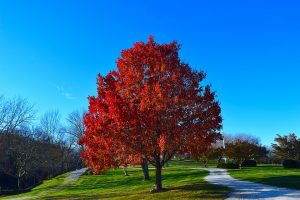Bees and Avocado Trees: The Power of Pollinators

Thanks to their delicious taste, creamy texture and the array of health benefits they provide, avocados have exploded in popularity over the last few decades. Formerly considered a delicacy for only the wealthiest among us, avocados are now a staple component in the diets of many.
But unfortunately, avocado farmers are currently facing a number of challenges. One of the most significant is achieving sufficient fruit production from each tree. However, growers have potentially found a way to improve their yield. They just need help from a very special animal: the humble honeybee.
Read on to learn about the reasons that honeybees are providing a helping hand, and why your morning avocado toast may not be possible without the help of these six-legged saviors.
Avocado Trees at a Glance
The avocado tree (Persea americana) is originally native to Central America, but it is now grown in dozens of locations around the world. However, Mexico continues to be the epicenter of avocado production, as the country’s farmers produce about one-third of the global annual harvest.
Avocado trees grow best in warm climates, including tropical regions with ample yearly rainfall and places – like Southern California – with a Mediterranean climate, characterized by hot, dry summers and relatively mild, wet winters. Commercial avocado production obviously takes place outdoors, but individual consumers occasionally grow these plants indoors.
Avocado trees may reach 60 feet or more in height, although most remain smaller than this. They are clad in attractive, deep green leaves, and they are available in a number of different cultivars.
Avocado Flowers: Peculiar Pollination
Avocado trees produce an incredible number of very tiny flowers, measuring about 1 centimeter (roughly one-half inch) in diameter. Indeed, large individuals often bear one million flowers or more. However, only a very small subset of these flowers will set fruit – typically on the order of 100 to 200, although occasional trees may produce as many as 500.
The reasons avocado trees only produce a relatively small number of fruits aren’t entirely understood. However, it likely has to do with the strange flowers these trees bear and their unusual pollination mechanism.
Avocado flowers have male and female reproductive structures. However, they aren’t simultaneously functional – they function as males or females for a short time before closing up and reopening later, when they function as the opposite sex. After the second opening sequence has completed, they close permanently.
Different avocado cultivars exhibit different pollination patterns. Some – known as Group A – function as female flowers in the morning, before reopening and functioning like male flowers in the afternoon. Cultivars in Group B exhibit the opposite trend. They function as male flowers and release pollen in the morning, before becoming receptive to pollen later in the afternoon.
This mechanism is often thought to have evolved as a way to prevent self-fertilization. Because the flowers on a given tree are typically functioning as one sex or the other at a given time, it is unlikely that a tree will fertilize itself. Instead, the pollen from one needs to reach the female flowers of another avocado tree. This tends to make avocado tree pollination relatively inefficient. So, avocado farmers are increasingly seeking help from pollinating insects – specifically honeybees.
Honeybees Lend a Helping Hand
While honeybees don’t seem to have a particular affinity for avocado flower nectar, they can and do visit the flowers routinely. In doing so, they often transfer pollen from the male flowers of one tree to the female flowers of another, thereby achieving pollination and – in some cases – fruit set.
Honeybees aren’t the only insects that participate in avocado tree pollination, but they are among the most helpful. Additionally, given the fact that honeybees are widely available from apiculturists (beekeepers), they are easy to introduce to groves.
Historically, avocado farmers would install one or two honeybee hives per acre of avocado trees. But in recent years, farmers – and the university researchers who study the interrelationship between avocados and bees – have begun using more hives per acre. Currently, many farmers are using twice as many hives per acre, and some growers are using even more bees to achieve good fruit set.
Some farmers have also begun tweaking their planting and maintenance practices to help the honeybees accomplish their work more efficiently. For example, some have begun altering their pruning practices. This is done in the hopes of keeping the grove more open, which provides better flight paths for the bees to move between trees.
Interestingly, honeybees appear to be more helpful in avocado tree farming in some places than others. For example, they’re often quite beneficial for growers in southern California, but they prove less helpful in places like New Zealand, where hand-pollination seems to be more effective.
One possible solution for these farmers may come from some of the relatives of honeybees. Some have begun experimenting with bumblebees, who’ve reportedly increased avocado yield in some locations, while others – including growers in San Diego County – have turned to New World Carniolan bees.
***
If you’re one of the many southern California residents trying to produce your own avocado crop, you are surely already familiar with the challenges these trees present. But we’re here to help! If you need assistance keeping your trees healthy or improving your crop yield, give your friends at Evergreen Arborist Consultants a call. One of our ISA-certified arborists will visit your property, inspect your trees and provide a recommended course of action.











